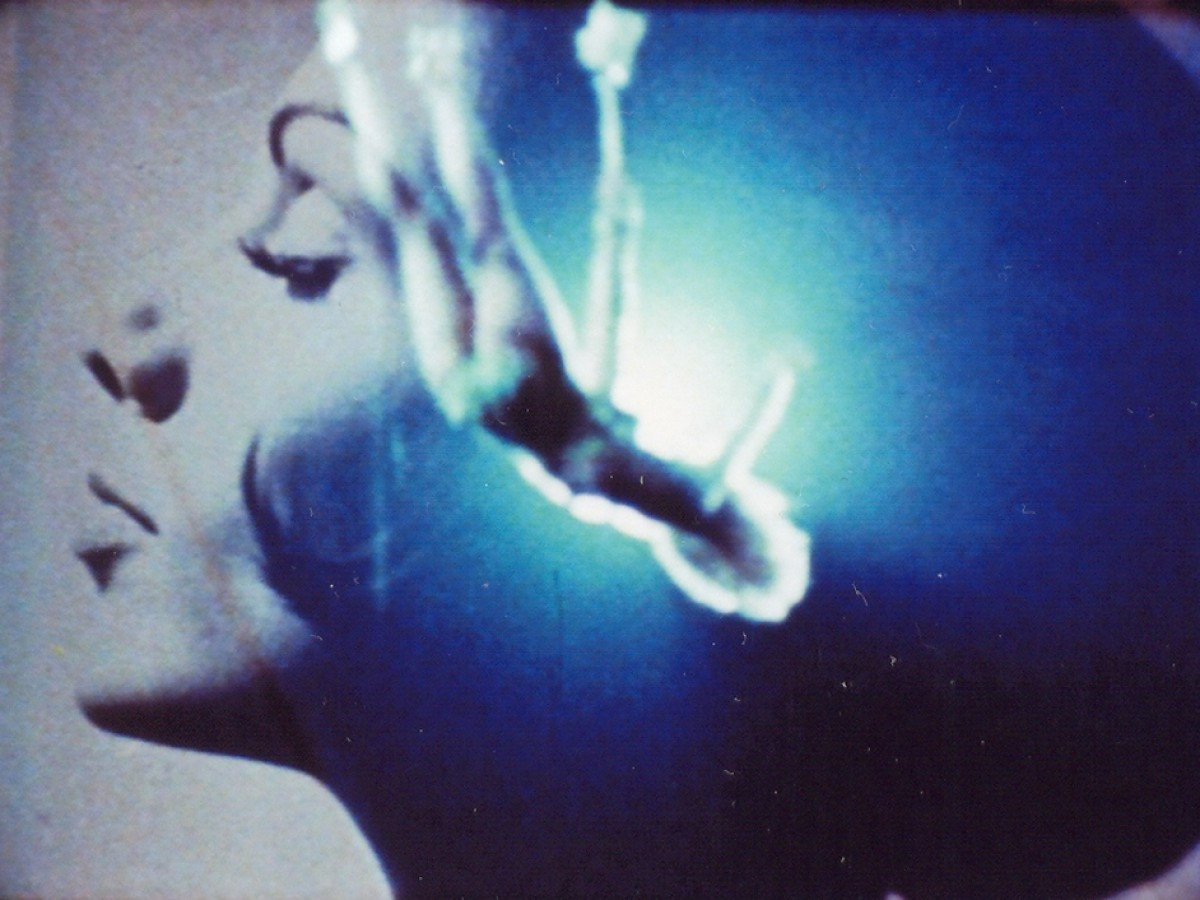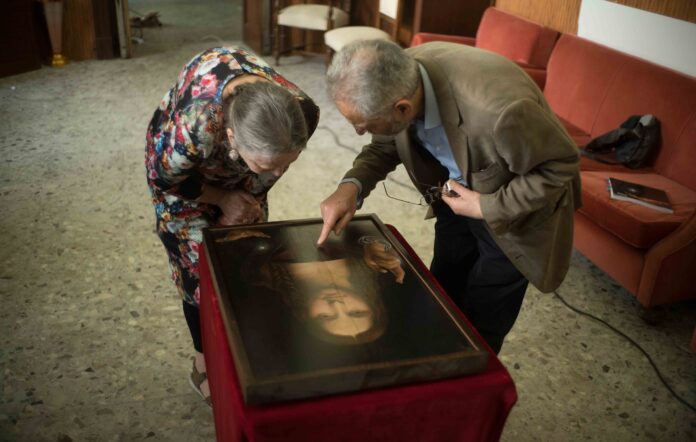The death 16 months ago of Bruce Baillie at age 88 was a major loss to the film world in many ways, as he was venerated not just for his own films (particularly those made in US avant-garde cinema’s golden age of the 1960s), but also for founding Canyon Cinema, the pioneering, still-operative SF-based distributor for experimental film and video. SF Cinematheque—which spun off from Canyon fourteen years later, in 1975—is presenting as memorial Good Skies Almost All The Time, which will also serve launch publication of print publication Dear Folks: Notes and Letters from Bruce Baillie, and to kick off Canyon at the Roxie, a projected monthly showcase for Bay Area filmmakers.

Emphasizing his best-known period of work, the mid-’60s, the bill will nonetheless feature several lesser-sung titles (Little Girl, Still Life, the “Canyon Newreel” Termination about government betrayal of Native American rights) as well as a couple shorts he typically used as program preludes (“Show Leader,” the much later “Introduction to the Holy Scrolls”). Then there are a couple famous works: 1966’s brief “All My Life,” a single sunstruck pan along a picket fence to an Ella Fitzgerald track that is often considered one of the first hurrahs of structural film; and the prior year’s Quixote, a mostly-B&W panoramic collage of mid-century America encompassing the trivial and the tragic, a perfect time capsule sans need for any explanatory spoken word. The first two Good Skies programs at the Roxie (Sat/21 and Mon/23, both 6:30 pm) have sold out; at press time tickets for an added third (Mon/23 at 8:20 pm) were still available. More info here.
Giants of a somewhat more literal-minded if fictitious nature will stalk the Balboa’s screens this weekend, as another Godzillafest this time makes room for that green machine’s hairiest occasional archenemy. Thus the three days of monster mashing will stretch all the way from the original 1933 King Kong to this very year’s big-budget Godzilla vs Kong, with room in between for (natch) the considerably campier 1962 King Kong vs Godzilla, Dino De Laurentis’ overhyped yet underrated 1976 King Kong remake, Peter Jackson’s 2005 version, and the 1967 Japan/US co-production King Kong Escapes.
That latter extravaganza, which involves both a Doctor Who (but not that one) and a robot “Mechani-Kong,” had as its ingenue blonde American actress Linda Miller, whose brief screen career also encompassed the next year’s Toho sci-fi cult fave The Green Slime. The lady herself will be interviewed onstage at those two films’ screenings, as well as being “available for autographs and to greet fans throughout the three days of the show.” Running Fri/20-Sun/22, this latest Godzillafest will include over a dozen features (including such relative rarities as Godzilla vs Space Godzilla and Godzilla vs Mechagodzilla II, both from 1994), as well as special shorts, live toy vendor displays, and its own limited-edition T-shirt. Full program/ticket info here.
The Night House
There are other scary-movie options opening this weekend, including District 9 director Neill Blomkamp’s inexplicably abysmal Demonic, and the enterprising but ultimately frustrating low-budget Blood Conscious. But the only sure shot among them is this thriller, which made a big noise at Sundance way back in Jan. 2020 (snagging a $12 million distributor purchase), only to sit on the shelf ever since because COVID.
Rebecca Hall plays a prickly upstate NY schoolteacher in a state of angry seclusion after the suicide of her architect husband, an event that took her wholly by surprise. In the metal-and-glass lakeside house he built for them, she grieves alone—or would, if not disturbed by poltergeisty disturbances in the night. There are knocks at the door without a visitor; the stereo turns itself on, and so forth. Eventually Beth begins suspecting her spouse kept secrets from her, ones that now seem to be working themselves out in the house and surrounding woods.
As a mystery of possibly-supernatural nature, The Night House is more than a bit murky, then less than satisfying (let alone convincing) in its resolution. But director David Bruckner summons up a good deal of atmospheric chill that makes the film suspenseful irregardless of its plot holes. Far from a great horror movie, this is still well above average in craft and creepiness. It’s opening in theaters nationwide this Fri/20.
Cryptozoo
Comic book creator Dash Shaw’s first feature, 2016’s My Entire High School Sinking Into the Sea, was a visually impressive six-year labor of love somewhat let down by its limp script. This follow-up (co-credited to animation director Jane Samborski), isn’t particularly well-written either. But its fantasy concept is inventive enough to sustain another spectacular display of disparate visual techniques and styles.
“Cryptids” are a hidden strata of extraordinary beings, some familiar from traditional mythologies, that a la the X-Men are hunted for exploitation and profit by the military, black marketeers, etc. Some human do-gooders hope to open a Jurassic Park-like attraction in which Cryptids are kept, both for their own protection and to educate a fearful populace. Needless to say, however, this plan is doomed to go south. An anti-patriarchy (among other things) parable, Cryptozoo’s narrative drive sometimes flags. But as a psychedelic sci-fi fantasy action blowout, it combines at least some of the charms of Yellow Submarine, Fantastic Planet and Heavy Metal into one major stoner’s delight that is a feast of eye candy. It opens Fri/20 at the Embarcadero and Shattuck Cinemas, in addition to becoming available On Demand.
The Lost Leonardo
There are very, very few surviving and verified Da Vinci paintings in existence. So the discovery of a “new” one—which would be the first in over a century—naturally generates both over-the-top excitement and skepticism. That was exactly what happened when a “sleeper hunter” (a person who hunts for significantly undervalued artworks) dug up a mystery painting that had landed in New Orleans. It was a damaged portrait of Jesus, vaguely labeled a copy “after Leonardo,” most likely done by one of his apprentices, or one of their apprentices.
When turned over to a world-class restorer, however, she became convinced that it was no copy, and that indeed “No one but Leonardo could have painted this picture.” While doubts remained, this ignited a firestorm of activity that eventually led this “male Mona Lisa” to be purchased for a mind-reeling $450 million at auction. Yet its current whereabouts (and even ownership) are unknown, the players in that outcome including both a Russian oligarch and a Saudi crown prince (yes, that one).
Is this painting dubbed “the Salvator Mundi” the “real thing” or not? Was that claim simply a hysterical delusion, a deliberate fraud, or a leap of cautious faith that might yet be confirmed? Those central questions remain unanswerable for the time being. But Andreas Koefoed’s documentary spins a web of international intrigue and art-world greed (as well as genuine belief) that is as engrossing as any fictive page-turner. It underlines the extent to which cultural capital can become political capital, at which point “art” almost becomes irrelevant—yet remains the thing whose disputed value (in many senses) fascinates us. The Lost Leonardo opens Fri/20 at the Embarcadero, adding venues including Rafael Film Center and Shattuck Cinemas on Fri/27. If you’re not sated with just one documentary on the subject, another (Savior for Sale: Da Vinci’s Lost Masterpiece?) will be available on streaming platforms as of September 17.
The Outsider
Defenders of the Salvatore Mundi had hoped it would be sold to a reputable museum (where worldwide experts might access and thoroughly evaluate it), rather than to a private collector. Getting a whole museum to itself is our nation’s defining 21st century tragedy to date. Pamela Yoder and Steven Rosenbaum’s documentary charts the planning and construction of the National September 11 Memorial & Museum, which commemorates the 9/11 attacks and is located on the site of the former World Trade Center twin towers. As with everything involving those events, its creation and very existence has been mired in debate and controversy. Victims’ surviving families objected to gift-shop items, specific exhibits, to the general notion of a “tourist attraction” on a de facto burial ground.
But the primary focus in this late-arriving chronicle (the museum opened over seven years ago) is on Michael Shulman. Living within sight of the towers, his personal photo project wound up making him a “global expert on 9/11 images.” That in turn got him hired as the prospective institution’s “creative director,” an amorphous role in which he soon clashed with the more seasoned nonprofit professionals on staff.
They were “trying to invent a new kind of museum.” But the pressure of public opinion, rich donors, political currents, a $500 million budget, et al. ultimately resulted in something Shulman considered a betrayal of mission. He “wanted to ask questions,” while others “wanted to provide answers” with the museum. In the end, it’s argued, a “more narrow” vision won, in which no questions were asked save “How could they have done this to us??” Critics thought the museum offered simplistic “comfort in a story of good versus evil,” minus any troubling but arguably necessarily context re: events that preceded 9/11, or how our society profoundly changed after it.
As someone says here, “Myth is reductive, and can get in the way of truth,” which is often messy and complicated. Is there room in such a high-profile institution for those troubling complications? Apparently not. It’s absorbing to see that kind of institutional struggle take place, though this feature leaves some questions of its own unanswered. Shulan is posited as the titular nagging outsider, yet we learn almost nothing about him. In truth, it’s not even entirely clear how his concept clashed with whatever the museum finally become—though we certainly do see him clash with coworkers. We’re meant to take for granted that his vision is somehow purer, but the onscreen specifics supporting that are elusive.
In the end, The Outsider compels because any such huge undertaking (let alone one focused on victims of terrorism) is bound to attract clashing personalities and ideologies. We witness some of that drama, even if the matter of who’s “right” and “wrong” doesn’t seem as evident (or simple) as the movie wants us to believe. The film will be available via streaming (including from Rafael Film Center) as of Fri/20. Info here.





